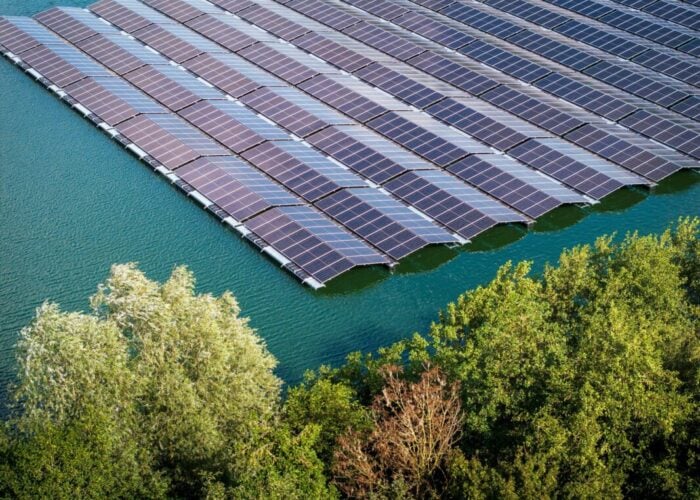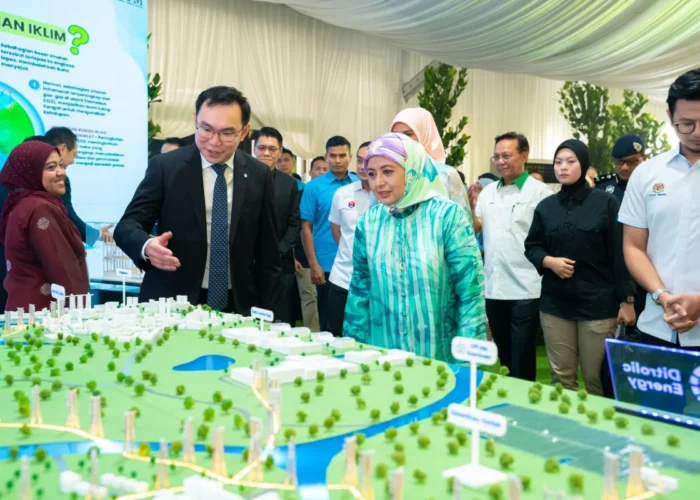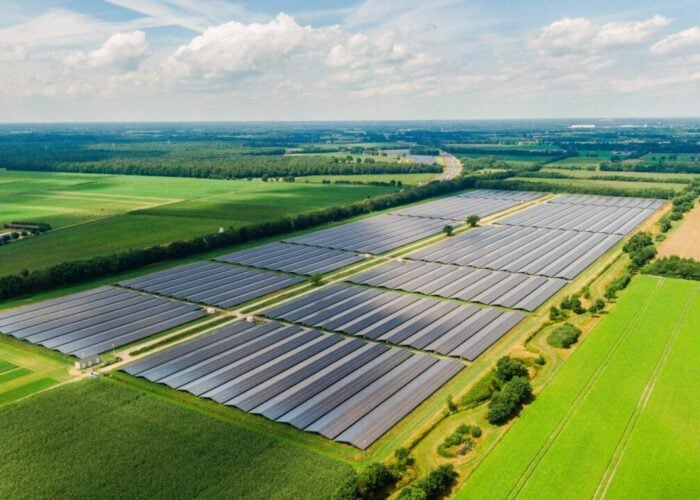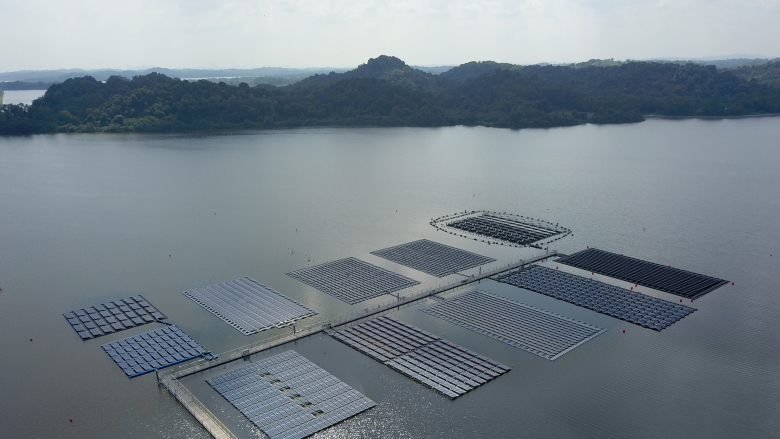
Global floating solar installations had reached 1.1GW as of September this year, a huge rise from just 10MW at the end of 2014, according to the first report on floating PV from the World Bank and Solar Energy Research Institute of Singapore (SERIS).
The report ‘Where Sun Meets Water’ stated that floating solar has the potential to ultimately reach a total of 400GW. So far, China, India and Southeast Asia are leading the charge, with some individual installations going above 100MW in this region.
Try Premium for just $1
- Full premium access for the first month at only $1
- Converts to an annual rate after 30 days unless cancelled
- Cancel anytime during the trial period
Premium Benefits
- Expert industry analysis and interviews
- Digital access to PV Tech Power journal
- Exclusive event discounts
Or get the full Premium subscription right away
Or continue reading this article for free
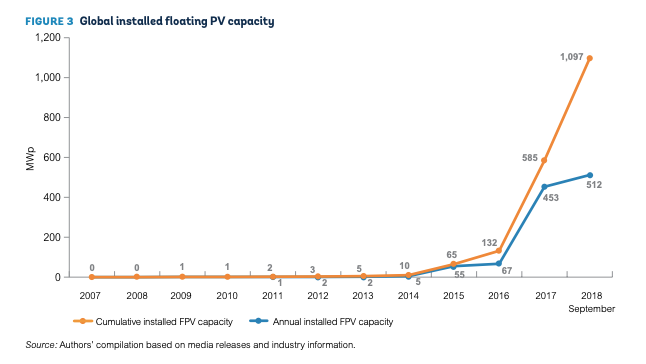
Covering just small areas of reservoirs created by hydropower plants with floating PV can significantly boost plant capacity and the two technologies are complementary, with hydros ability to smooth the variable solar output. The floating technology also allows solar to be located closer to urban centres with higher power demand. The report noted that this burgeoning technology has created opportunities to scale up solar globally particularly in areas with high population densities and high demand for land.
Floating solar does cost more up-front, but costs over time of floating solar are at par with traditional solar, because floating solar can produce higher energy yield due to the cooling effect of water. The solar systems also reduce evaporation on key water bodies. However, the technology currently suffers from not having a long-standing track record in practice, the threat of possible effects on water quality, anchoring and mooring challenges, and the relative complexity of maintaining some parts of the installations, particularly electrical components.
Riccardo Puliti, senior director for Energy and Extractives at the World Bank, saidL “Floating solar technology has huge advantages for countries where land is at a premium or where electricity grids are weak. Governments and investors are waking up to these advantages, and we are starting to see interest from a wide range of countries in Africa, Asia and Latin America.
“We fully expect demand to grow for this technology and for floating solar to become a larger part of countries’ plans for expanding renewable energy. It will be important to ensure that best practices are shared among countries and development minimizes any environmental impacts.”
The report is the first in a series of reports on floating solar from the World Bank and SERIS.
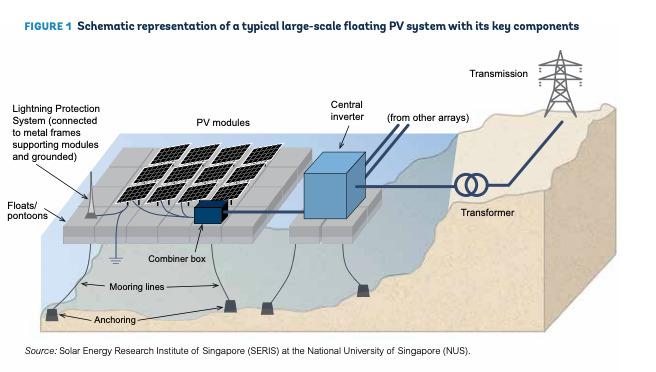
The report stated: “Currently most large-scale floating PV plants are deployed using pontoon-type floats, with PV panels mounted at a fixed tilt angle. Typically, the floating structure can be made of so-called pure floats or floats that are combined with metal trusses.”


